
Melvin Wine has always lived near Burnsville in northern Braxton County.
Braxton County is located in the center of West Virginia on the western
slope of the Allegheny Mountains. Nineteenth-century industrialization with its railroads, good roads, and
commerce, largely avoided the rugged terrain of the Appalachian region.
The relative inaccessibilty did create an environment where traditions could
develop and mesh over many generations without frequent influence from outside
the region.
Ancestors of the Wine family were from Germany [-> FW#26].
Melvin Playford Wine was born April 20, 1909.
Education was not easy to obtain when Melvin was a boy. Melvin never learned to read.
Much of his childhhod was spent helping his father and mother manage their small farm.
Early in his childhood, Melvin showed a special interest in musical traditions and
gatherings, which surrounded him in his home and community.
The fiddling tradition in his family goes back to Melvin's great-grandfather, Smithy Wine (1829-1909).
When Melvin was about fourteen years old, he and [his banjo-playing brother] Clarence were invited
by the owner of the movie theater at Burnsville to perform for the audiences while the movie reels were being changed. On one occasion, the movie theater owner decided to
organize a fiddle competition. We went down to play. It wasn't no judges, just the people judged, you know. My dad got second place and I got first place. And he
got five dollars worth of tickets and I got a five-dollar bill. That didn't suit
him very well, of course. Clarence and Melvin began performing often at dances.
Throughout his career as a coal miner, Melvin and [his wife] Etta were involved in farming,
raising cattle, cutting some timber, and raising [ten] children.
Melvin continued to supplement his coal mining earnings by playing for square dances at dance halls.
In his opinion, the presence of alcohol was a principal factor in determining
the atmosphere at a dance. There were people in the community who were excessive
drinkers and were inclined to cause trouble.
I've seen people fight, cuss, use God's name in vain, and drinking, and I've seen
people killed at them.
He eventually began to feel uneasy and suspicious, especially as he began to contemplate religion more.
As the depression of the 1930s and its emotional affects lingered on, the dances became more and more troubled. Melvin increasingly viewed dancing, drinking, and fiddle
playing as being intertwined, and he became disillusioned with fiddle playing.
That caused him to turn more to religion and to quit playing fiddle for a period
of time. Melvin was saved in 1938 and he changed his life dramatically.
However, giving up music fits in a wider picture:
The Great Depression changed the general mood of people to one of seriousness and sorrow,
and community dances were becoming increasingly scarce. Radios were being purchased
by more and more people, and newer musical styles were becoming popular. The popularity
of old-time fiddle music was declining.
Around 1957 Melvin began playing the fiddle again.
In 1950, West Virginia University English professor and folk song researcher
Patrick W. Gainer
organized the first West Virginia State Folk Festival in Glenville. The festival,
which continues as an annual event today, supplied an arena in which fiddle playing
was viewed as an honorable and desirable skill. Around 1957 [Melvin] decided to go,
along with his fiddle, to see what the event was about.
The festival supplied Melvin with an alcohol-free arena where his music was valued.
Melvin was encouraged to continue to play fiddle by people who heard him at Glenville.
By 1970, Melvin was starting to become a familiar participant at festivals. His slow return
to fiddling coincided with the heyday of the folk music revival that brought large
numbers of young people to the festivals. Many of these enthusiasts were attempting to
learn fiddle tunes from the senior fiddlers who attended the festival.
Melvin received the National Heritage Fellowship award in 1991.
The attention has bolstered Melvin's enthusiasm for fiddling, but it has not changed
his life substantially, because the attention has rarely included monetary rewards.
He continues to work on the farm.
Melvin continues to raise cattle with the help of his sons, but the low price of beef
makes him want to quit raising cattle. He lives largely off the Social Security benefits.
Melvin Wine passed away in March 2003.
Fortunatly, the book was written when Melvin was still alive, so the author could draw
from interviews with the man himself.
The book, deriving from a Ph.D. study, contains a chronological review of Melvin's life,
the region and its music, plus an analysis of
Melvin's tunes, style and techniques as well as transcriptions of ten of his tunes.
However, while trying to penetrate Melvin's life,
the approach sometimes seems to naive to me.
Or what shall I think about statements like:
he values his community and roots deeply, but he enjoys traveling;
or: he remembers tunes well, but he often forgets titles.
Melvin used to tell a story about his great-grandfather and the fiddle tune
'Soldier's Joy' (-> FW#27):
During the Civil War, the soldiers
learned he could play a fiddle, and they told him, said, well, when
we get back home, said, we're going to have a square dance at your house,
stag dance, you know, just the soldiers. And he said, If you know a tune that you
don't know any name for, said, we'll name it. So he played a tune, and they
called it the 'Soldier's Joy.'
Unfortunatly, the story cannot be true since the tune had been already
printed under that title in the late 1700s. Well, here's an opportunity now to have a look at some tune books.
While Melvin played for square dances, people in New England prefer the
contra dance (the partners facing each other
-> FW#27,
FW#30).
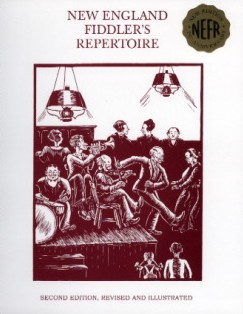 There is a different fiddle style as well,
though there is some common repertoire in both West Virginia and New Hampshire
comparing the tunes Melvin had and
browsing through contra fiddler and piano player Randy Miller's
collections of contra music: e.g.
I could figure out the reel 'Green Fields of America'
(-> FW#24,
FW#29),
'Fisher's Hornpipe' (-> FW#23), and
'Walk Chalk Chicken with a Necktie On' which is closely related to
'Farewell to Whiskey' (-> FW#19,
FW#22).
There is a different fiddle style as well,
though there is some common repertoire in both West Virginia and New Hampshire
comparing the tunes Melvin had and
browsing through contra fiddler and piano player Randy Miller's
collections of contra music: e.g.
I could figure out the reel 'Green Fields of America'
(-> FW#24,
FW#29),
'Fisher's Hornpipe' (-> FW#23), and
'Walk Chalk Chicken with a Necktie On' which is closely related to
'Farewell to Whiskey' (-> FW#19,
FW#22).
Contra music use whatever kind of tune:
There were no ethnic boundaries. So long as the tempo
was quick enough and the rhythm well suited, our tunes ranged from
French Canadian to British Isles to ancient Macedonian Greek.
New England Fiddler's Repertoire
is restricted to the classic Irish, British and French-Canadian repertoire:
168 fiddle tunes that made the trip from Britain and Ireland to America
(e.g. compare George Deacon's 'John Clare and the Folk Tradition',
-> FW#24, with
Ken Perlman's 'Clawhammer Banjo',
-> FW#30), be it
the jig 'Haste To The Wedding'
(-> FW#20,
FW#25,
FW#29)
or the 'Money Musk' reel
(-> FW#23,
FW#27), or
contra dance standards such as the
'Chorus Jig' (-> FW#27),
'Growling Old Man And Grumbling Old Woman'
(-> FW#19,
FW#23,
FW#27,
FW#30)
and 'O'Donal Abu' (-> FW#27,
FW#30).
The volume had been first published in 1983, the revised edition is easier to read
(the 1983 edition was hand-written),
and chords have been added. The standard contra repertoire,
still helpful to keep the music alive and going.
The Fiddler's Throne is expanding the classic contra repertoire with
375 jigs, reels, hornpipes, marches, and waltzes,
based on Randy Miller's collecting trips over the years.
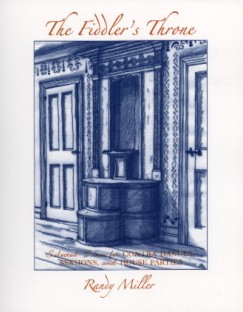 Also included are more than 20 tunes from the manuscript of New Hampshire fiddler John Taggart (1854-1943); two tunes that are based on themes in Handel's 'Arrival of the Queen of Sheba'; a good measure of tunes is only recently composed: e.g.
Liz Carroll (-> FW#24),
Richie Dwyer (-> FW#29),
Jerry Holland
(-> FW#3),
Josephine Keegan (-> FW#25),
Maurice Lennon (-> FW#23),
the Beatons (-> FW#28),
and Randy Miller himself.
Also included are more than 20 tunes from the manuscript of New Hampshire fiddler John Taggart (1854-1943); two tunes that are based on themes in Handel's 'Arrival of the Queen of Sheba'; a good measure of tunes is only recently composed: e.g.
Liz Carroll (-> FW#24),
Richie Dwyer (-> FW#29),
Jerry Holland
(-> FW#3),
Josephine Keegan (-> FW#25),
Maurice Lennon (-> FW#23),
the Beatons (-> FW#28),
and Randy Miller himself.
Patrick Steinbach
is the son of an Irish mother and a German jazz musician from Hamburg.
He specialised himself in teaching and passing on traditional Irish music and
wrote several books about the subject, especially for guitar players.
His Irish Reel Book covers
250 classic Irish tunes, including an 18 track CD, from the slip jig
'A Fig For A Kiss' (-> FW#21,
FW#20,
FW#30)
to the reel 'Within A Mile of Dublin' (->
FW#19,
FW#21,
FW#25).
Some Carolan pieces (-> FW#20),
even flings, plus the melodies of some well-known folk songs
(however, I think 'Lifeboat Mona' had been written by
Peggy Seeger).
The tunes have chords added, and the volume includes
finger charts for guitar (standard tuning), mandolin and tin whistle.
The accompanying text is both in English and German,
including an introduction to the music, some history
(though I personally doubt some of his notes),
advices on playing with a band and in an informal session.
While Steinbach explores rather common ground,
Máire McDonnell Garvey
leads you off the beaten track.
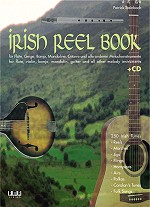 Máire and her musician friends (including bouzouki player
Niall O Callanain
-> FW#26)
delved deep into history in two previous books before: 'Mid-Connacht' is
a history of the Slieve Lugha area; 'A Traditional Music Journey 1600-2000'
connects the tradition in Mayo with South Armagh.
Cómhrá na dTonn - The Conversation of the Waves
is the name of a CD as well as a companion book where the story of each of the
32 tunes is narrated with more extensive notes than would fit in any CD booklet.
The hornpipe 'Comhra na dTonn' comes from the James Morrison legacy:
Máire and her musician friends (including bouzouki player
Niall O Callanain
-> FW#26)
delved deep into history in two previous books before: 'Mid-Connacht' is
a history of the Slieve Lugha area; 'A Traditional Music Journey 1600-2000'
connects the tradition in Mayo with South Armagh.
Cómhrá na dTonn - The Conversation of the Waves
is the name of a CD as well as a companion book where the story of each of the
32 tunes is narrated with more extensive notes than would fit in any CD booklet.
The hornpipe 'Comhra na dTonn' comes from the James Morrison legacy:
Our first research is on James Morrison, the great Sligo fiddle player born in Drumfin.
When visiting Martin Quigley (a nephew of Morrison) some time ago, it was interesting
to see the milestone at the gate of Morrison's old home. Today the milestone has been
incorporated into a memorial to James Morrison a few hundred yards from his home.
(This is the name of one of his reels.)
It would appear that the light in the west disappeared into the twilight when
James Morrison and the well-known good musicians left Ireland in the early
nineteen hundreds. In the early thirties Morrison moved to Manhattan and started to
teach the Bronx. He was featured on Judge Gustin's Monday night Irish Hour Radio
show. It was when these records came from the States that the light shone in the
west again and the demand for traditional music increased.
A true story from Co. Sligo was believed by all in my young days. Down at a little
fishing village, Aughris, along the Atlantic coast in north Sligo there is a causeway
of giant stones. When the weather gets rough the waves from the Atlantic roll in and
go under the cliffs at Aughris. There is a tremendous roar as this is happening. It
can be heard for a thirty-mile radius in Co. Sligo and north Roscommon. Older people
said in awe Do you hear the Comhra dTonn? And men, women and children saving
their hay made a mad dash to get finished before the heavy showers fell.
The musical journey turns south:

For over thirty years we have listened to talk about 'MacDonnell's March' or
'Allisdrum's Lament' [-> FW#27].
We found out there are thirteen parts in this lament.
Each part has a reason for being there. When played correctly it brings a vivid
picture to your mind. It commemorated the death of Alistair or Alexander MacDonnell,
son of Coll Kittogh or Left handed Coll, a famous warrior whose name found
it's way into a poem of Milton's. The young Colkitto rivalled his father in military
fame. The tradition of his strength and valour has been handed down to the present
day in the Highlands of Scotland and in the Glens of Antrim.
Lord Inchiquin inflicted a dreadful defeat on the [Catholic Irish] Confederates at
Cnoc na nDos near Mallow, Co. Cork [in 1647]. MacDonnell and his people
held their ground till they were cut to pieces. It is said that none escaped.
These are the thirteen parts in this piece of music.
The Trumpet calls the men to battle.
Awaiting the order before the battle.
Alistair calling out looking for support.
Marching on the battle field.
Awaiting the order for the battle.
Strike and slash, strike and slash and leave no one alive.
Now they were all dead but a single man who was wounded and Alistair went
through the slaughter to see if there was any man alive who would raise his
hand against him and there was no one. Then he took his horse to the stream
to get a drink and stooping down on the shoulder of the horse the wounded man
(enemy) made a vigorous thrust in Alistair's back and he fell back dead.
His mother The Munster Woman weeping.
His nurse, The Leinster Woman weeping.
His wife, The Ulster Woman weeping.
Church Hill [Cnocan an Teumpuill]. Jig in three parts.
Máire discovered the two most important men of the Wexford area. It was
P.J. McCall who composed the famous 1798 rebel ballads and Arthur Darley put the music to
them, 'Boolavogue' is featured here (->
FW#7,
FW#13).
He was also the composer of
'Arthur Darley's' aka the 'Swedish Jig' (-> FW#30).
However, Wexford is most famous for its mumming tradition,
four sets are featured that were collected by
Darley and McCall.
Mumming is an ancient custom, probably from the time of the Romans. It is not unlike
the medieval and miracle plays performed in England, Scotland and Wales from the 12th
century. The plays were more or less a competition between good and evil. St. George
versus the Dragon, and St. George versus Napoleon. When they were performed in Ireland
it became St. Patrick versus St. George. The number playing was generally twelve and
each character had a historical name. As the mumming went on one actor after another
stood out and said his piece, who he was, why they had come together and whether they
were on the side of good or evil. Each carried a short wooden sword, and at the end
of the performance did a magnificent sword dance.
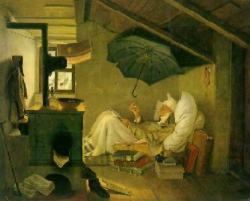 'Unquestionably, the musical soul of America is in its folk music, not in its
academic music', Charles Seeger wrote in 1938, 'and only in its popular music
to the extent popular music has borrowed, stolen and manhandled folk.' A decade
later his son Pete and buddies Woody and Cisco served as
introduction for many into the world of folk music. Ten years further on it is proclaimed:
'Has your appetite for music been curbed by calypso, jaded by jazz or reined by
rock 'n' roll? If so, tuck your guitar under your arm and drop by for a refreshing
evening of just plain old folk songs.'
'Unquestionably, the musical soul of America is in its folk music, not in its
academic music', Charles Seeger wrote in 1938, 'and only in its popular music
to the extent popular music has borrowed, stolen and manhandled folk.' A decade
later his son Pete and buddies Woody and Cisco served as
introduction for many into the world of folk music. Ten years further on it is proclaimed:
'Has your appetite for music been curbed by calypso, jaded by jazz or reined by
rock 'n' roll? If so, tuck your guitar under your arm and drop by for a refreshing
evening of just plain old folk songs.'
 Their name came from a 19th-century play by German writer
Their name came from a 19th-century play by German writer

 There is a different fiddle style as well,
though there is some common repertoire in both West Virginia and New Hampshire
comparing the tunes Melvin had and
browsing through contra fiddler and piano player
There is a different fiddle style as well,
though there is some common repertoire in both West Virginia and New Hampshire
comparing the tunes Melvin had and
browsing through contra fiddler and piano player  Also included are more than 20 tunes from the manuscript of New Hampshire fiddler John Taggart (1854-1943); two tunes that are based on themes in Handel's 'Arrival of the Queen of Sheba'; a good measure of tunes is only recently composed: e.g.
Also included are more than 20 tunes from the manuscript of New Hampshire fiddler John Taggart (1854-1943); two tunes that are based on themes in Handel's 'Arrival of the Queen of Sheba'; a good measure of tunes is only recently composed: e.g.
 Máire and her musician friends (including bouzouki player
Máire and her musician friends (including bouzouki player


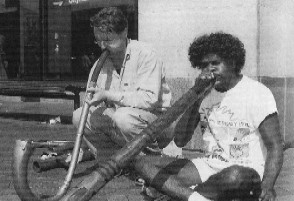
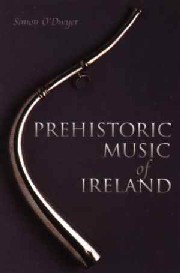 It might be compared with the most advanced computer chip or spacecraft engine
today. Is it not remarkable that such high levels of achievement were realized
in the pursuit of good musical instruments?
It might be compared with the most advanced computer chip or spacecraft engine
today. Is it not remarkable that such high levels of achievement were realized
in the pursuit of good musical instruments?

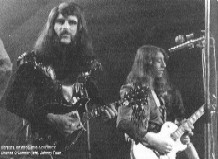
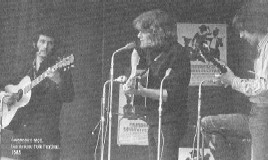


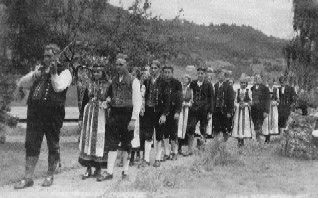
 Most authors are classical and jazz musicians,
though there's also
Most authors are classical and jazz musicians,
though there's also 